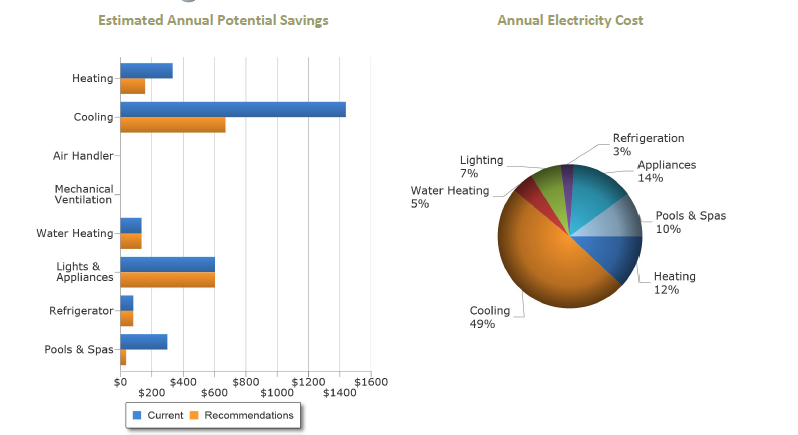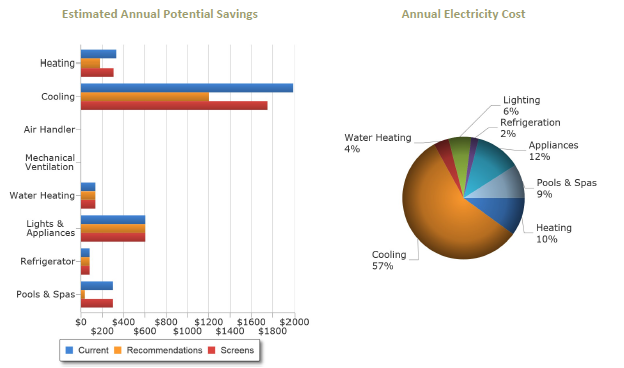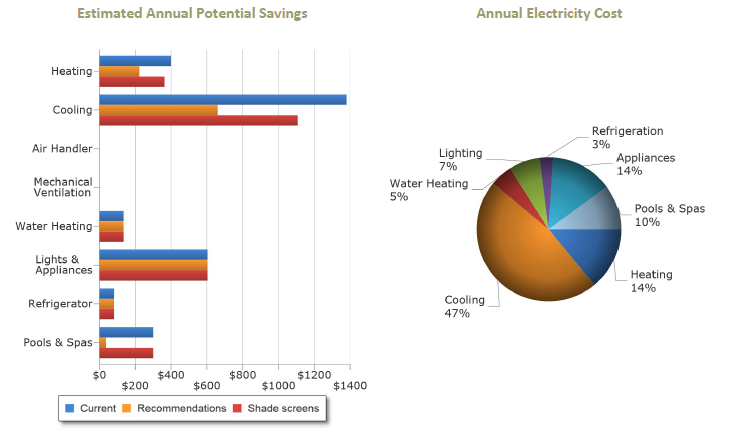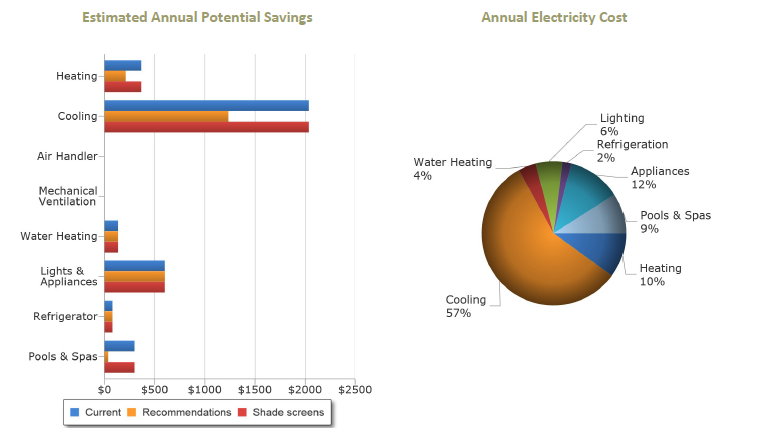Passing the BPI Exam With Energy Auditor Training
BPI PRACTICE EXAMPUT YOUR HOME PERFORMANCE BUSINESS ON ROCKET FUEL |
BPI Written Exam - Section 2 Buildings and Their Systems
The impact of shading on heating and cooling loads is a commonly underestimated by homeowners. Just by shading sun struck walls and windows can reduce the surface temperature by as much as 60 degrees in Phoenix. In climates dominated by cooling degree days, shading is one of the primary energy saving recommendations. In cooler climates further north, shading still has big impacts on the cooling loads of the home, but not as dramatic and is not one of the primary energy saving recommendations.
Shading can be achieved with landscaping, vines, awnings, roller shades or shade screens. If the home is being built and a homeowner has the opportunity to design their plot footprint, there is more opportunity to give more northern and eastern exposure to minimize solar heat gain and plan overhangs to block direct sun light in the summer and let sunlight in during the winter. Shading during the winter months will increase the heating demand of the home, so a well planned plot or removable or retractable screens are desired to let the sun naturally heat the home in the winter. Here are some examples showing the heat load effects of a 2000 sq ft home with direct sun exposure vs a home with 90% shade screens on all west, east and south facing windows. Features:
All things the same except the house is rotated 90 degrees so that the front now faces west.
All things the same except the house is rotated 90 degrees so that the front now faces south.
All things the same except the house is rotated 90 degrees so that the front now faces east.
Next Section2a. Building Components
2b. Conservation Strategies
2c. Comprehensive Building Assessment Process
2d. Design considerations
|









